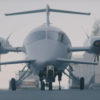Researchers have combined research with real and robotic insects to better understand how they sense forces in their limbs while walking, providing new insights into the biomechanics and neural dynamics of insects and informing new applications for large legged robots. They presented their findings at the SEB Centenary Conference 2023.
Campaniform sensilla (CS) are force receptors found in the limbs of insects that respond to stress and strain, providing important information for controlling locomotion. Similar force receptors exist in mammals known as golgi tendon organs, suggesting that understanding the role of force sensors in insects may also provide new insights into their functions in vertebrates such as humans.
“I study the role of force sensors in walking insects because these sensors are critical for successful locomotion,” says Dr. Szczecinski, an assistant professor in the Department of Mechanical and Aerospace Engineering in the Statler College of Engineering and Mineral Resources at West Virginia University, U.S. “The feedback they provide is critical for proper posture and coordination.”
The benefits of building robotic models over computer models include more realistic modeling of friction between moving parts and the inclusion of delays to send neural signals. Robotic limbs also have the advantage of being able to record the sending and receiving of every single signal and resulting mechanical actions, which is not possible with animals.
“Walking is an inherently mechanical task, so understanding the neural control of walking requires simultaneously investigating mechanics and neural control,” says Dr. Szczecinski. “Properly functioning walking robots can serve as prototypes for machines that could help people farm in extreme terrains, explore other planets, or walk through forests to monitor their health.”
Dr. Szczecinski has two main research robots: the first is a biomimetic robot based on the fruit fly (Drosophila melanogaster) which walks on six legs, enabling the team to capture a complete picture of how campaniform sensilla monitors forces while walking. The other robot is a single leg, which allows for a simplified simulation of the sensory experience of one insect leg while walking.
Dr. Szczecinski also explores the role of CS in real insects by isolating their limbs and monitoring sensory pathways with electrodes when different forces are applied. These recorded sensory signals are then used to develop models for the robotic legs.
“By recording their response to many different signals, we can paint a clearer picture of how they convert forces into neural activity,” says Dr. Szczecinski. “We use many different stimuli because the CS are highly dynamic and are always adapting to the applied forces.”
Dr. Szczecinski’s research has revealed very strong correlates between their real insects and robotic counterparts. “We find that for every insect species we check, our model is equally well equipped to describe the way the CS turn forces into neural activity,” says Dr. Szczecinski. “This suggests that each species’ organs are broadly functioning in the same way.”
Provided by
Society for Experimental Biology
Citation:
Big robot bugs reveal force-sensing secrets of insect locomotion (2023, July 6)



